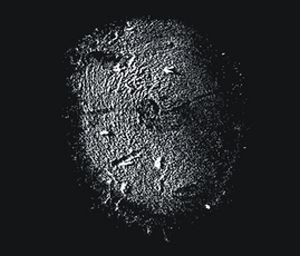Oct 28 2008
The fouling or growth of sea organisms, such as barnacles, on ships' hulls causes damage costing many billions of euros annually. In order to prevent this fouling, In Yee Phang of the University of Twente used nanotechnology to investigate how barnacles colonize a surface. This is the first time that the existence of barnacle cyprid larvae 'footprints' has been demonstrated. Phang will be awarded his doctorate on 24 October at the faculty of Science and Technology.
 The footprint of the barnacle cyprid larva of approximately 30 micrometre, revealed by an Atomic Force Microscope.
The footprint of the barnacle cyprid larva of approximately 30 micrometre, revealed by an Atomic Force Microscope.
In order to be able to prevent barnacle adhesion to ships, we have to know how they attach themselves to surfaces. In Yee Phang therefore investigated the colonization process of barnacles. This process begins in the early stages of development when the larvae are still able to move freely.
Barnacle larvae are about a half a millimetre in size and do not yet have a shell. They can swim, but they can also move over a surface. They do so by temporarily clamping themselves to the surface in question by exuding a sticky substance, a sort of protein-based biological cement. The mark left by this cement on a surface is known as a ‘footprint'. This footprint contains chemical substances that attract other larvae. The first footprint on a surface is therefore the first step in the colonization of the surface concerned.
Scientists have suspected the existence of a larval footprint for some time, but this had not yet been directly demonstrated. Using nanotechnology, Phang was able to reveal footprints measuring approximately 30 micrometre for the first time. He achieved this using an Atomic Force Microscope (AFM). This is a microscope that explores a surface and ascertains differences in height with a miniscule needle. Not only does this enable one to observe extremely small objects, but this research can also be carried out in the original environment, in this case, seawater.
Barnacles
Barnacles are hermaphroditic animals that are about a centimetre in size with a calcium carbonate skeleton that looks like a shell. They anchor themselves to surfaces just like mussels. The adhesion of barnacles to ships' hulls causes damage costing many billions of euros annually. The shells increase the friction between the hull and water so that the ship uses more fuel. Furthermore, it is difficult, and consequently expensive, to remove the shells from ships' hulls.